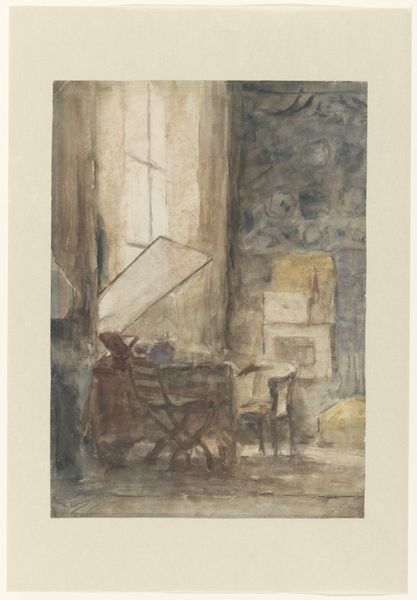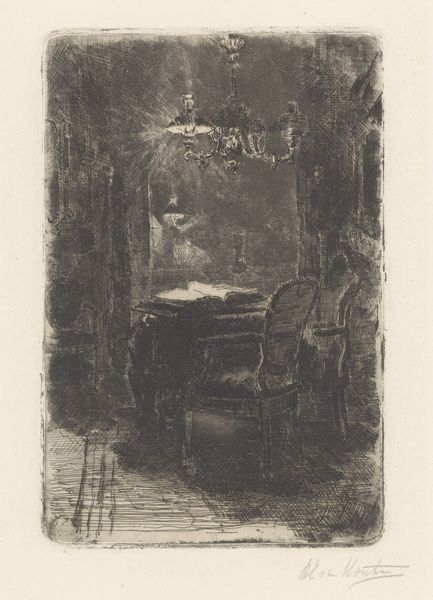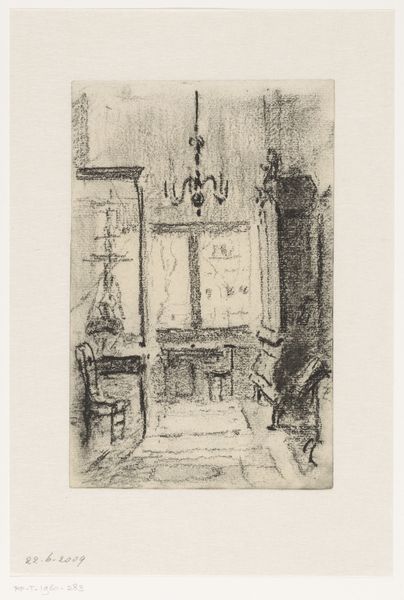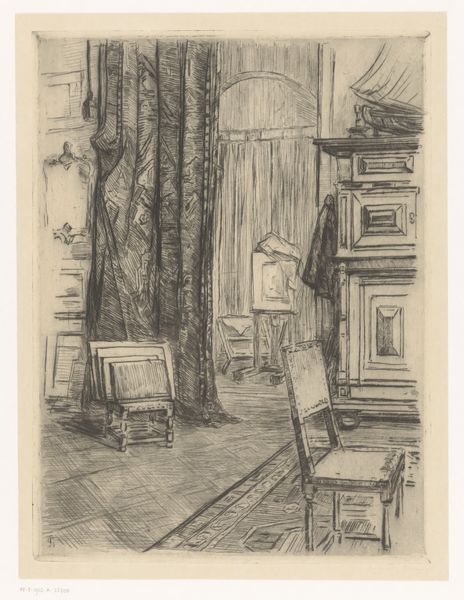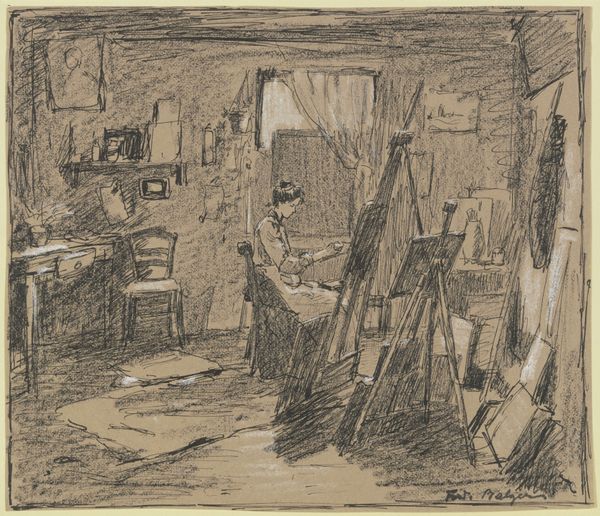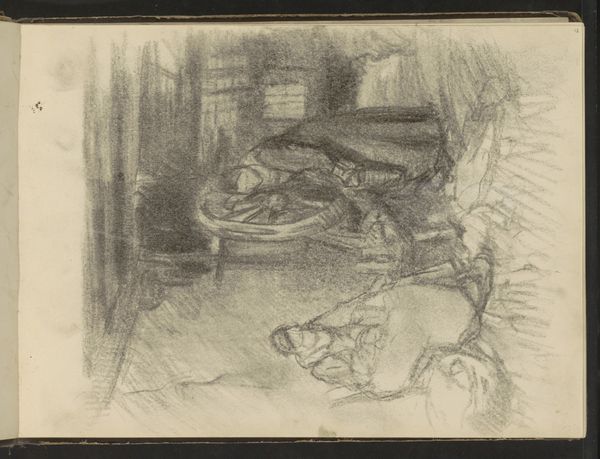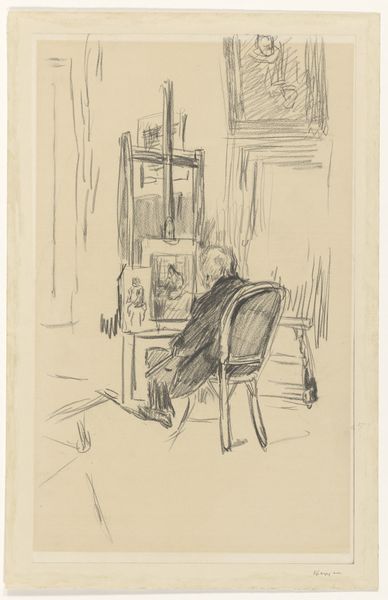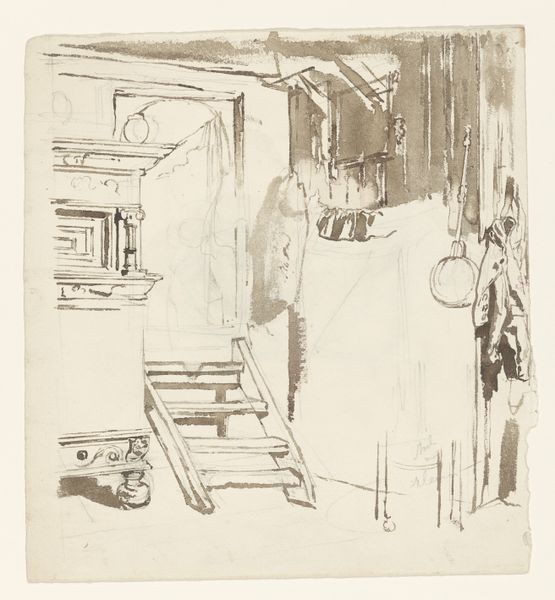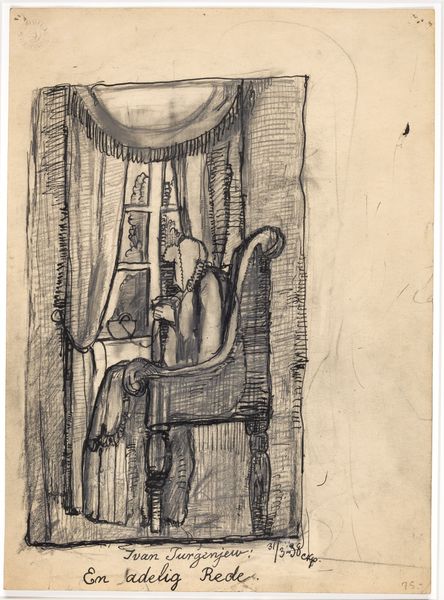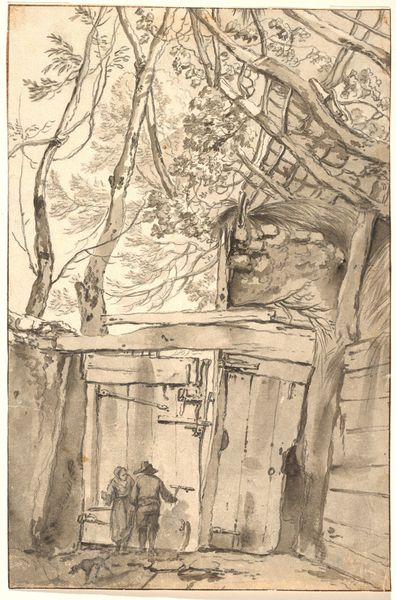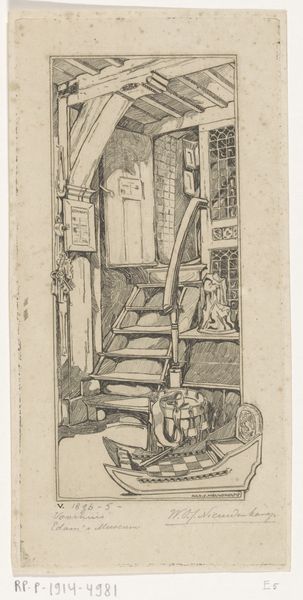
Het atelier van H.W. Mesdag, met twee modellen van zeilschepen 1872 - 1950
0:00
0:00
Dimensions: height 543 mm, width 400 mm
Copyright: Rijks Museum: Open Domain
Curator: Immediately, I'm struck by the moodiness. It's a very enclosed, intimate space. Editor: Yes, the lighting definitely sets a tone. We're looking at a drawing in watercolor by Barbara Elisabeth van Houten, entitled "The studio of H.W. Mesdag, with two models of sailing ships," dating roughly between 1872 and 1950. Curator: It certainly captures the feeling of a working artist's space. The rough, almost unfinished quality adds to that immediacy. I can practically smell the oil paints! Editor: Consider the object on the bureau: models of sailing ships, almost like icons of artistic exploration. It hints at Mesdag's own celebrated maritime paintings. Perhaps these miniature vessels acted as a kind of visual shorthand, allowing him to study form and light without confronting the vastness of the open sea. Curator: And that’s an intriguing point about materiality: van Houten chose watercolor for what's fundamentally a workspace, maybe even an industrial one, where Mesdag labored on depictions of the sea! The ships embody how production intertwines art and craft; their delicate form reflects the work behind making something like that. Editor: It's compelling to see van Houten choosing an "intimism" aesthetic while picturing Mesdag’s workshop; she transforms a workspace dominated by labor into a place of private reflection and ingenuity, which imbues those maritime models atop the dresser with a layer of significance that connects us to the rich nautical imagery and historical symbols linked to the Netherlands, right? Curator: Precisely! The choice of watercolor creates a kind of softened gaze through which to explore the cultural production of maritime history that you speak of. By doing that it really encourages a reconsideration of the relationship between labour, material representation and individual artistry in a collective history of cultural making. Editor: Absolutely. It transforms this somewhat obscure corner of art history into a fascinating study in labor, artistry, and legacy, I think. Curator: And, viewed that way, it speaks volumes about the nature of creative inspiration, turning the mundane into the evocative.
Comments
No comments
Be the first to comment and join the conversation on the ultimate creative platform.
